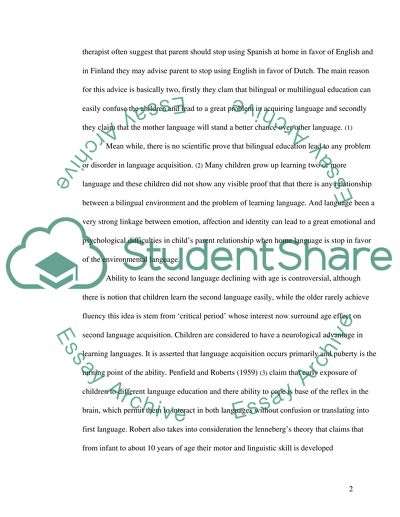Cite this document
(Bilingual and Multilingual Education is an Educational Program Essay, n.d.)
Bilingual and Multilingual Education is an Educational Program Essay. Retrieved from https://studentshare.org/education/1540586-how-do-bilingual-children-and-mulitlingual-children-learn-to-read-or-writespeak-through-the-use-of-role-play
Bilingual and Multilingual Education is an Educational Program Essay. Retrieved from https://studentshare.org/education/1540586-how-do-bilingual-children-and-mulitlingual-children-learn-to-read-or-writespeak-through-the-use-of-role-play
(Bilingual and Multilingual Education Is an Educational Program Essay)
Bilingual and Multilingual Education Is an Educational Program Essay. https://studentshare.org/education/1540586-how-do-bilingual-children-and-mulitlingual-children-learn-to-read-or-writespeak-through-the-use-of-role-play.
Bilingual and Multilingual Education Is an Educational Program Essay. https://studentshare.org/education/1540586-how-do-bilingual-children-and-mulitlingual-children-learn-to-read-or-writespeak-through-the-use-of-role-play.
“Bilingual and Multilingual Education Is an Educational Program Essay”, n.d. https://studentshare.org/education/1540586-how-do-bilingual-children-and-mulitlingual-children-learn-to-read-or-writespeak-through-the-use-of-role-play.


